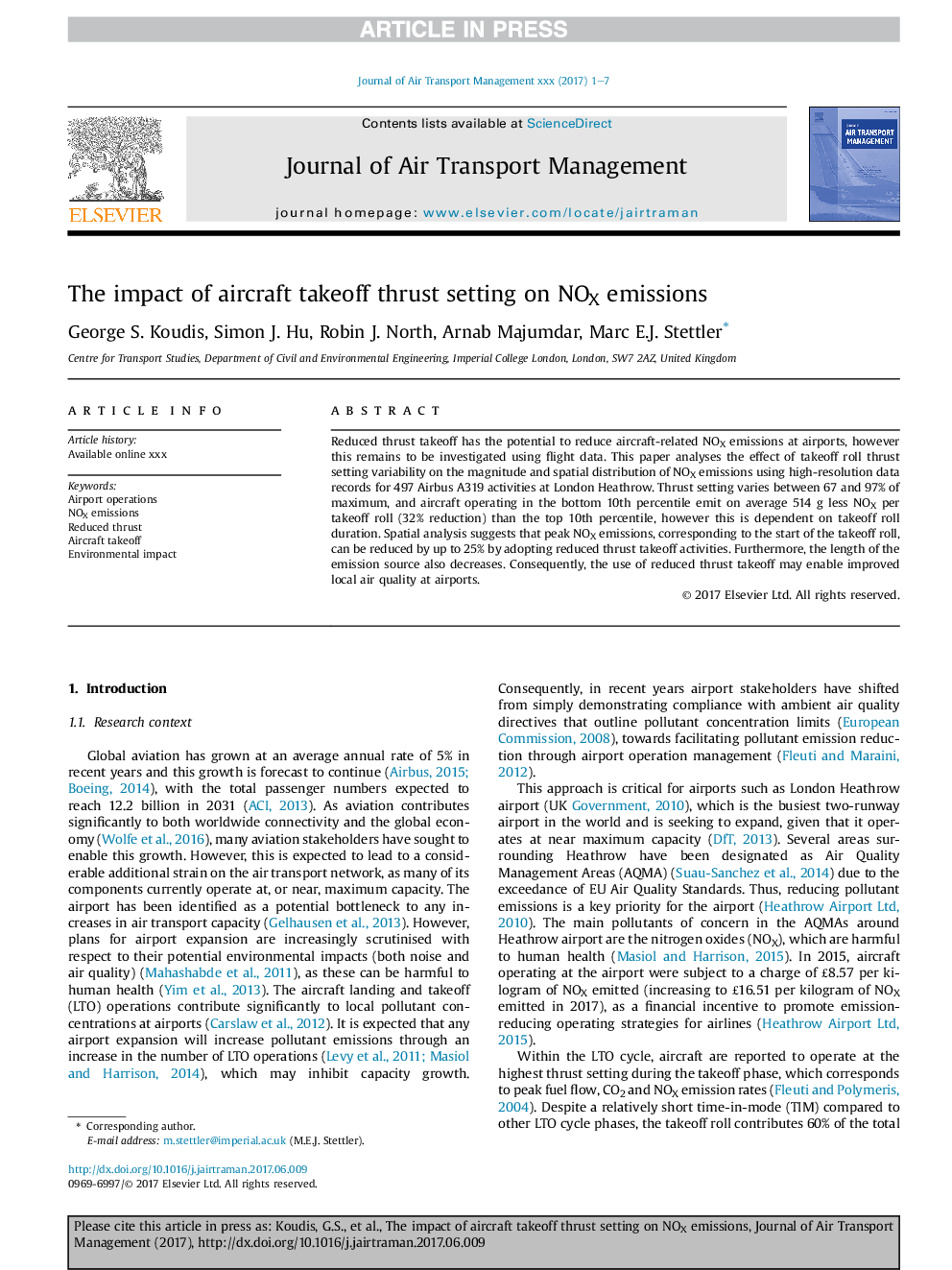| Article ID | Journal | Published Year | Pages | File Type |
|---|---|---|---|---|
| 7435377 | Journal of Air Transport Management | 2017 | 7 Pages |
Abstract
Reduced thrust takeoff has the potential to reduce aircraft-related NOX emissions at airports, however this remains to be investigated using flight data. This paper analyses the effect of takeoff roll thrust setting variability on the magnitude and spatial distribution of NOX emissions using high-resolution data records for 497 Airbus A319 activities at London Heathrow. Thrust setting varies between 67 and 97% of maximum, and aircraft operating in the bottom 10th percentile emit on average 514Â g less NOX per takeoff roll (32% reduction) than the top 10th percentile, however this is dependent on takeoff roll duration. Spatial analysis suggests that peak NOX emissions, corresponding to the start of the takeoff roll, can be reduced by up to 25% by adopting reduced thrust takeoff activities. Furthermore, the length of the emission source also decreases. Consequently, the use of reduced thrust takeoff may enable improved local air quality at airports.
Related Topics
Social Sciences and Humanities
Business, Management and Accounting
Strategy and Management
Authors
George S. Koudis, Simon J. Hu, Robin J. North, Arnab Majumdar, Marc E.J. Stettler,
